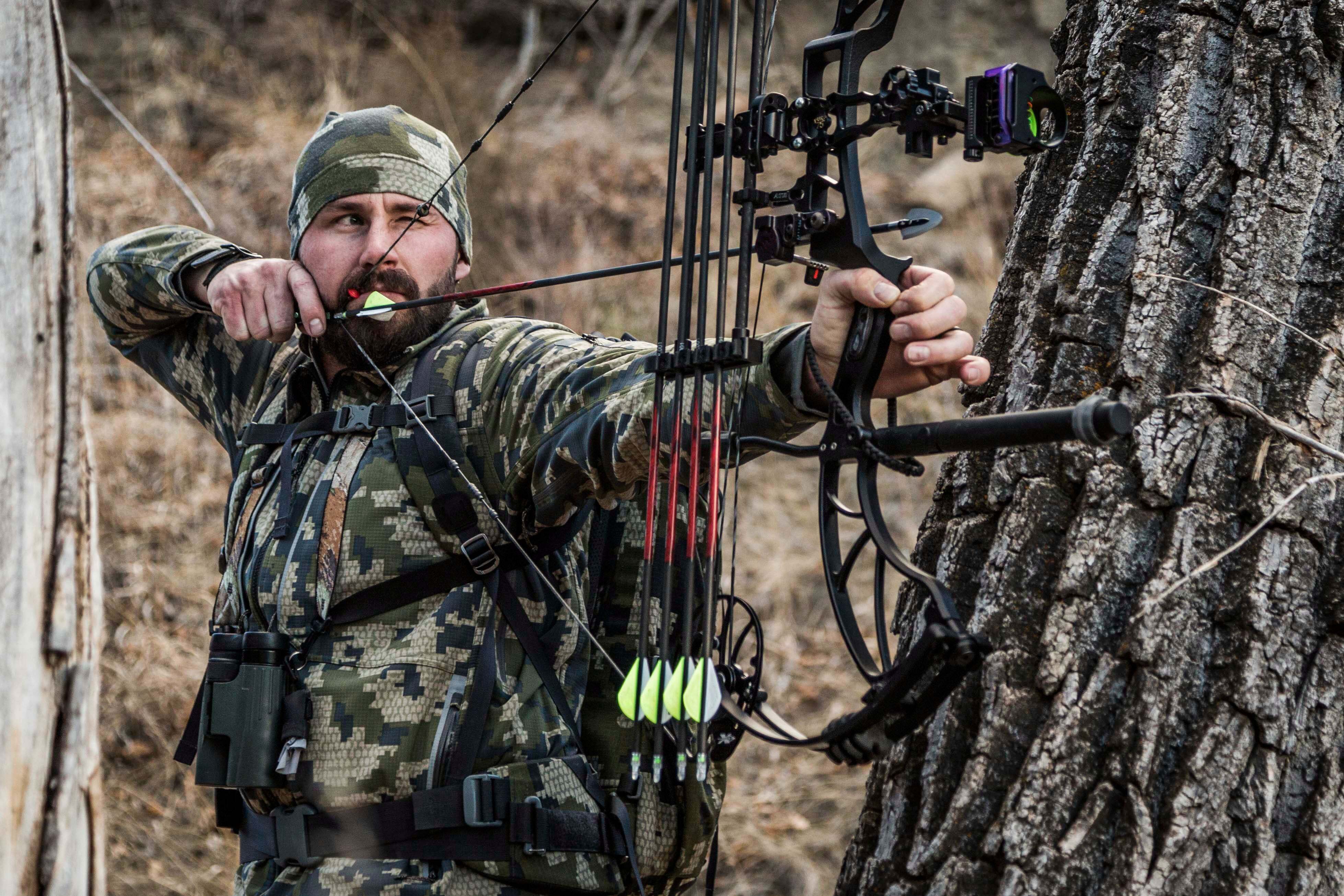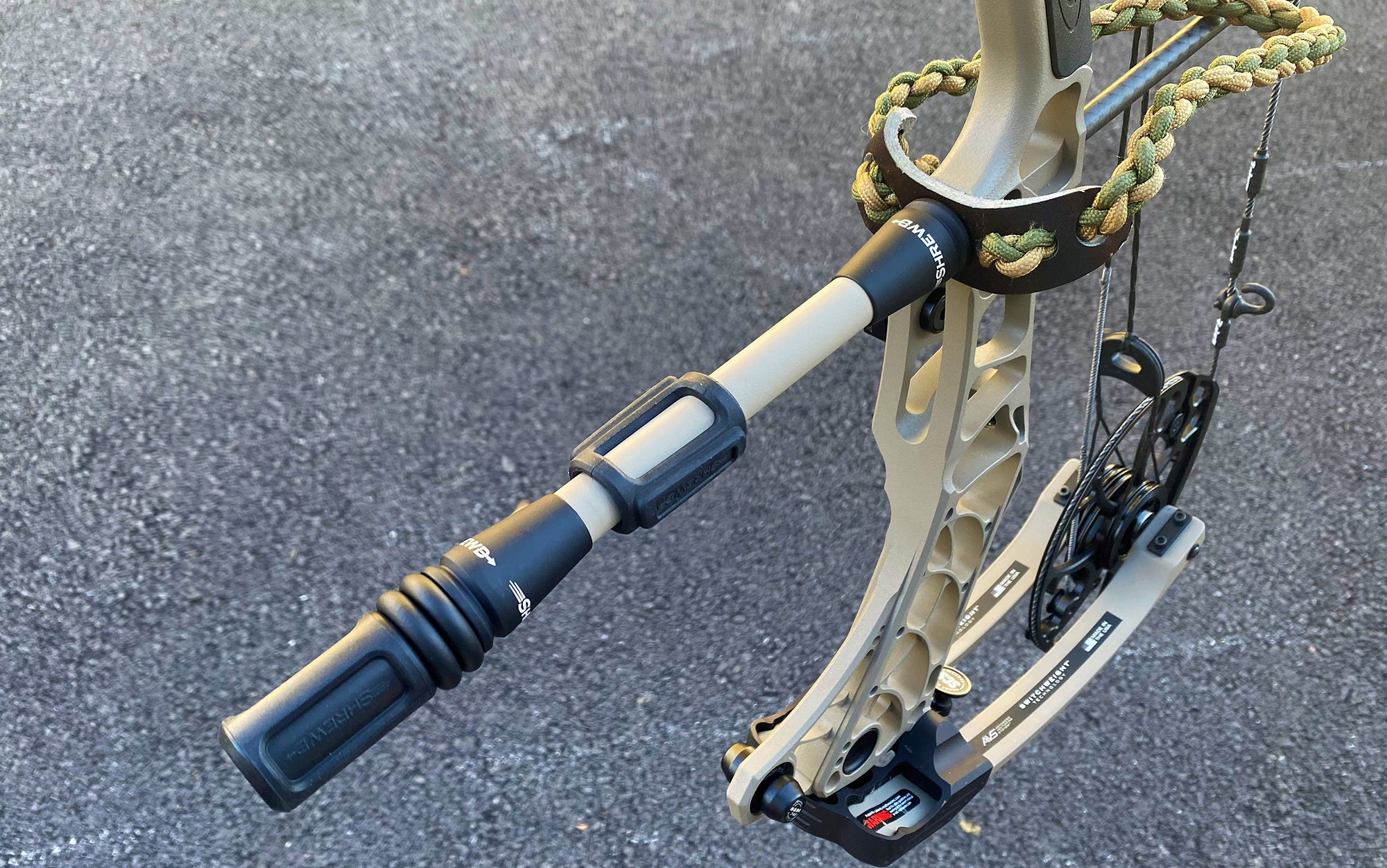How to Pick the Right Bow Stabilizer: Specialist Tips and Advice
How to Pick the Right Bow Stabilizer: Specialist Tips and Advice
Blog Article
Maximize Your Archery Accuracy With These Bow Stabilizer Methods
One critical component that can substantially affect your efficiency is the appropriate usage of bow stabilizers. Whether you are a seasoned archer looking to improve your skills or a newcomer anxious to improve your accuracy, understanding these bow stabilizer strategies can be the key to striking your mark with unequaled consistency.
Advantages of Utilizing Bow Stabilizers
Utilizing bow stabilizers can significantly improve an archer's precision and overall performance by minimizing bow torque and resonance. In addition, bow stabilizers dampen resonance, which not just improves the comfort of capturing yet likewise protects against the bow from jumping upon release, therefore assisting in maintaining appropriate goal.
Furthermore, bow stabilizers can help in holding the bow constant, especially during gusty problems or when firing from longer distances. The added weight at the front of the bow offers security and equilibrium, allowing the archer to concentrate on aiming without the diversion of bow motion. On the whole, the advantages of using bow stabilizers extend beyond simply precision, boosting the archer's experience and efficiency in various shooting scenarios.
Choosing the Right Bow Stabilizer
Picking the proper bow stabilizer is critical for maximizing your archery devices and enhancing shooting performance. Larger stabilizers can assist decrease bow torque and absorb even more vibration, leading to a steadier goal.

Finally, consider the design of the stabilizer. Some stabilizers include flexible weights or dampeners that allow you to personalize the equilibrium and feeling of your bow. Inevitably, picking the ideal bow stabilizer involves discovering an equilibrium in between weight, length, design, and material to enhance your shooting accuracy and general efficiency.
Appropriate Installation Techniques
To ensure optimal performance and safety in archery, mastering correct installment strategies for your bow stabilizer is necessary. The very first step in installing a bow stabilizer is to identify the correct placement on your bow.
Next, securely affix the stabilizer to the bow making use of the proper installing hardware. It is crucial to tighten up the stabilizer comfortably to stop any type of wobbling during shots. Some stabilizers feature flexible weights that can be added or removed to make improvements the equilibrium of your bow. Try out different weight arrangements to discover the ideal balance that matches your shooting style.

Adjusting Stabilizer Weight and Length
After making certain the correct installment Website of your bow stabilizer, the following action includes adjusting the weight and length to maximize its efficiency in improving archery accuracy. The weight of the stabilizer plays an essential role in minimizing bow activity throughout the shot cycle.
A longer stabilizer can provide better stability by increasing the range between the bow and the weight at the end of the stabilizer. Alternatively, a shorter stabilizer supplies a lot more maneuverability and might be preferred by archers that value agility and fast movements throughout shooting.
Advanced Stabilizer Tuning Tips
Attaining optimal bow security and precision in archery demands a nuanced strategy to sophisticated stabilizer adjusting. Advanced stabilizer tuning entails fine-tuning various parts to enhance the bow's equilibrium, reduce resonance, and boost overall precision. One key method is to trying out different stabilizer arrangements, consisting of side-bar and back-bar arrangements, to find the excellent balance between security and maneuverability for your shooting design. bow stabilizer. In addition, adjusting the angle and positioning of the stabilizer can have a considerable influence on how the bow reacts upon launch.
An additional essential element of sophisticated stabilizer adjusting is maximizing the damping residential or commercial properties of the stabilizer system. This can be accomplished by integrating added additional resources wetting devices such as rubber dampeners or harmonic stabilizers to further reduce vibration and noise. Exploring different materials for the stabilizer building and construction, such as carbon fiber or light weight aluminum, can additionally affect the view it bow's efficiency by changing its weight circulation and stiffness. By carefully tweak these innovative stabilizer components, archers can optimize their precision and consistency on the range or in competition.
Conclusion
In final thought, maximizing archery precision can be achieved with the correct choice, installment, and adjustment of bow stabilizers. On the whole, incorporating bow stabilizers right into archery practice can lead to enhanced efficiency and increased precision.
Making use of bow stabilizers can substantially enhance an archer's precision and total efficiency by minimizing bow torque and resonance. Longer stabilizers give greater security and equilibrium, especially for long-distance shooting, while much shorter stabilizers use more flexibility and are less complicated to maneuver in tight areas (bow stabilizer). Carbon fiber stabilizers are resilient and light-weight, while light weight aluminum stabilizers are robust and offer exceptional resonance wetting
A longer stabilizer can supply greater stability by enhancing the distance in between the bow and the weight at the end of the stabilizer.An additional crucial aspect of sophisticated stabilizer tuning is enhancing the damping buildings of the stabilizer system.
Report this page